Showing 51–60 of 134 results

The book relates the diverse experiences of Mr. Tzannis Tzannetakis, a former Greek Prime Minister, in India: he witnesses centuries-old marvels, landmarks of its long religious-cultural tradition; and his response is profound and genuine.
A journey to India . . . is quite unlike a journey to any other land . . . this sentiment expresses the uniqueness of a visitors experience of India. For, among other things, India is a perpetual mystery to him from the beginning; he wades through the mystique and out of it; and he is never free of it. For Mr. Tzannis Tzannetakis, a former Prime Minister of Greece, India is this and much more. His informal experiences presented here are diverse and steeped in the historic-cultural flavour special to India. He sees its centuries-old palaces, forts of ancient maharajas, of the glorious Mughals; the unparalleled cave monuments of Ajanta-Ellora with their exquisite carvings, the breathtaking sculptural decorations and the architectural dream of Khajuraho; the grandeur of the Taj, a wonder in white marble; the exotic deserts of Jaisalmer; the heart of holy India, Banaras, with the ever-flowing Ganga; the marvel of Delhi which amalgamates the old and the new. His response is, likewise, rich with a range of tones; he not only admires the material landmarks of ancient India but breathes in the spirit of the past the old delight, the royal romance, the dignity, valour in that chivalry . . . His is not simply a discovery of India but an analysis of Indias time-tested values and its modern message in order to understand India in the real sense its unique past; the India of today, of the traditional and the modern; and the India of the future . . . its goals, aspirations. The authors tone is wonder-struck but, at the same time, genuine and realistic. He captures the essential India and not just its forms and colours to present a delightful, critical and sensitive picture.
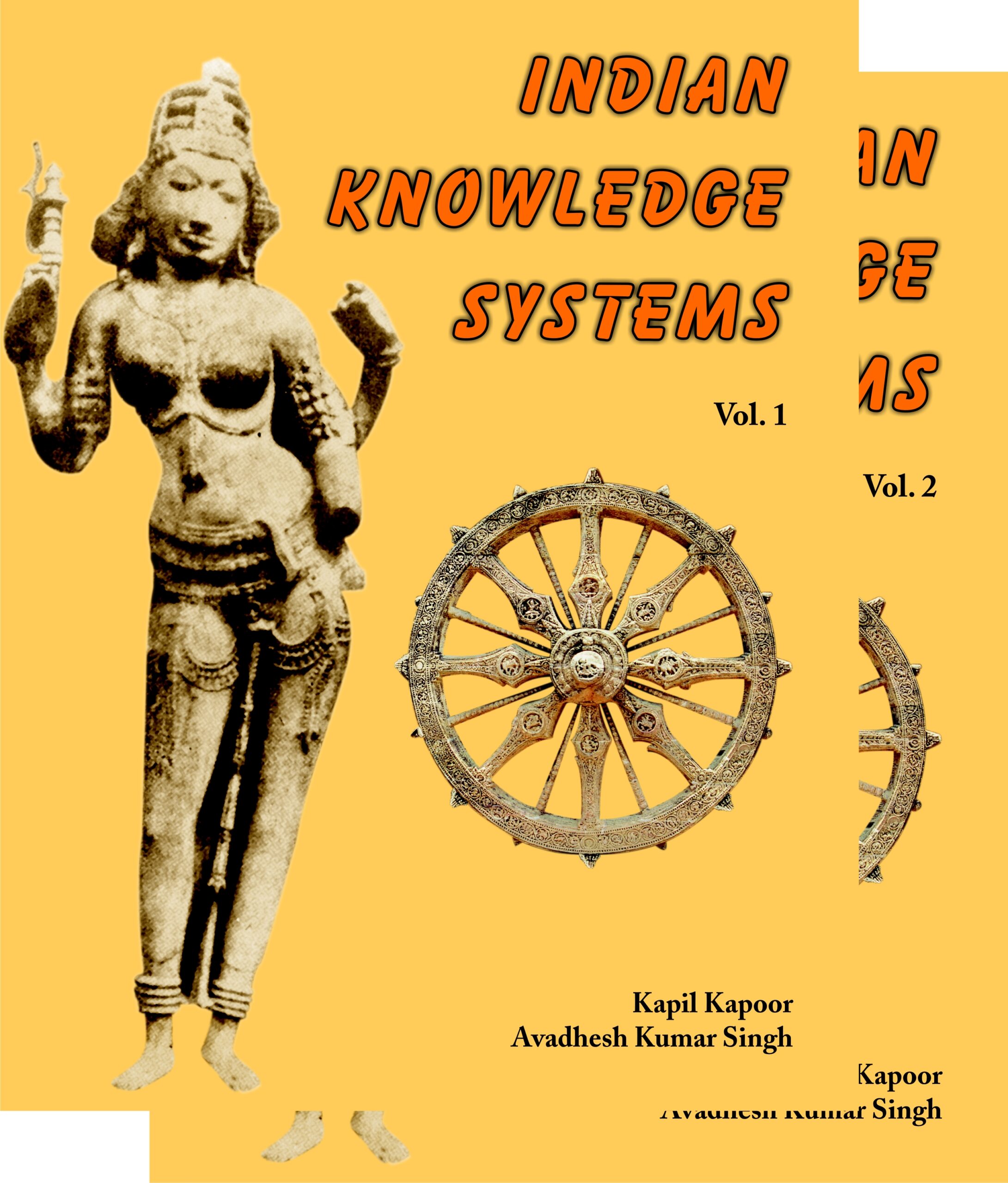
India has continuous and cumulative intellectual traditions and thisbook endeavours to expound the major Indian Knowledge Systems, under its seven sections and makes available authoritative statements that articulate their validity for the contemporary Indian and Western reality in the modern perspective.
India has continuous and cumulative intellectual traditions in many domains of knowledge. This tradition has its beginning in the Rigveda, the first attested Indo-European document, and continues to be alive in the life, practices and learning of the Indian people. The power and pertinence of knowledge systems in this tradition are attested by the existence of innumerable texts and thinkers that continue to be the subject of study in major contemporary universities round the world. Not many today are aware of this rich heritage of thought. The Academy therefore produces rootless young minds that at best are ignorant and at worst have contempt for their own traditions of thought. The two volumes, comprising 34 articles by distinguished scholars, expound some major Indian knowledge systems viz. Logic, Philosophy of Language, Technology and Crafts, Polity and Governance, Ethics and Sociological texts, Architecture, Poetics and Aesthetics, Law and Justice, Mathematics and Astronomy, Agriculture, Trade and Commerce and Medicine and Life Science. Under its seven sections (i) Indian Knowledge Systems (Ex)Positions; (ii) Science; (iii) Medical Science in India; (iv) Psychology, Polity and Sociological Texts; (v) Aesthetics and Poetics; (vi) Philosophy, Logic and Language; and (vii) Knowledge Formation, Dissemination and Practice it makes available the first statements that articulate their validity for the contemporary Indian and Western reality.
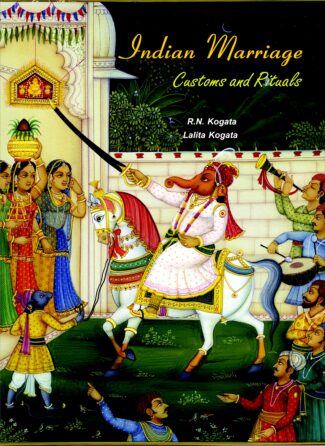
Marriage or Vivaah, particularly in India, is a sacred ceremony comprising various customs Þ religious and social Þ and Vedic rituals. These are meant to propitiate the gods for obtaining their blessings for the bride and the bridegroom, and to honour and entertain those who participate in the celebrations. This book explains in detail, all the important rituals which form part of the marriage.
Marriage is considered a very significant ritual for giving societys sanction to a close relationship between a man and a woman as husband and wife. It is, therefore, also called a social system. The marriage ceremony is a combination of many rituals, based on information contained in Hindu scriptures. It also represents and reflects the social customs and practices that are prevalent in the society. The rituals vary depending upon the community, the religion and the state where they are performed. The marriage customs, rites and rituals among royal families are mentioned in this book most of these rituals are followed by common people as well and are performed in the original or altered forms in the Indian society. Mr R.N. Kogata and Mrs Lalita Kogata did a lot of research and consulted several authorities and have written in detail about the various rituals involved in a human beings life from birth to death. Different scholars have mentioned different numbers of rituals and sacraments 25, 40 or 48. But Maharishi Veda Vyasa has described 16 rituals as important. Out of these, the Vivaah (marriage) samskaar itself encompasses various rituals the main ones covered in this book are: the Bindaulee (wedding procession); Hathalevaa (hand-taking ceremony or paanigrahan), Phere (agni pradakshinaa, circumambulation of fire); Kanyaadaan (giving away daughter in marriage); Maangbharaaye (filling vermilion); Mangalsutra (tying the wedding thread); Saptapadee (walking seven steps together); and Vadhu kee Vidaaee (brides departure to her in-laws house). This book should be in all households in order that all will know the meanings of the various rituals in a marriage particularly in the present days when learned pandits who can explain the rituals, are few, and people have no time or inclination to go through voluminous scriptures or texts on the subject of marriage.
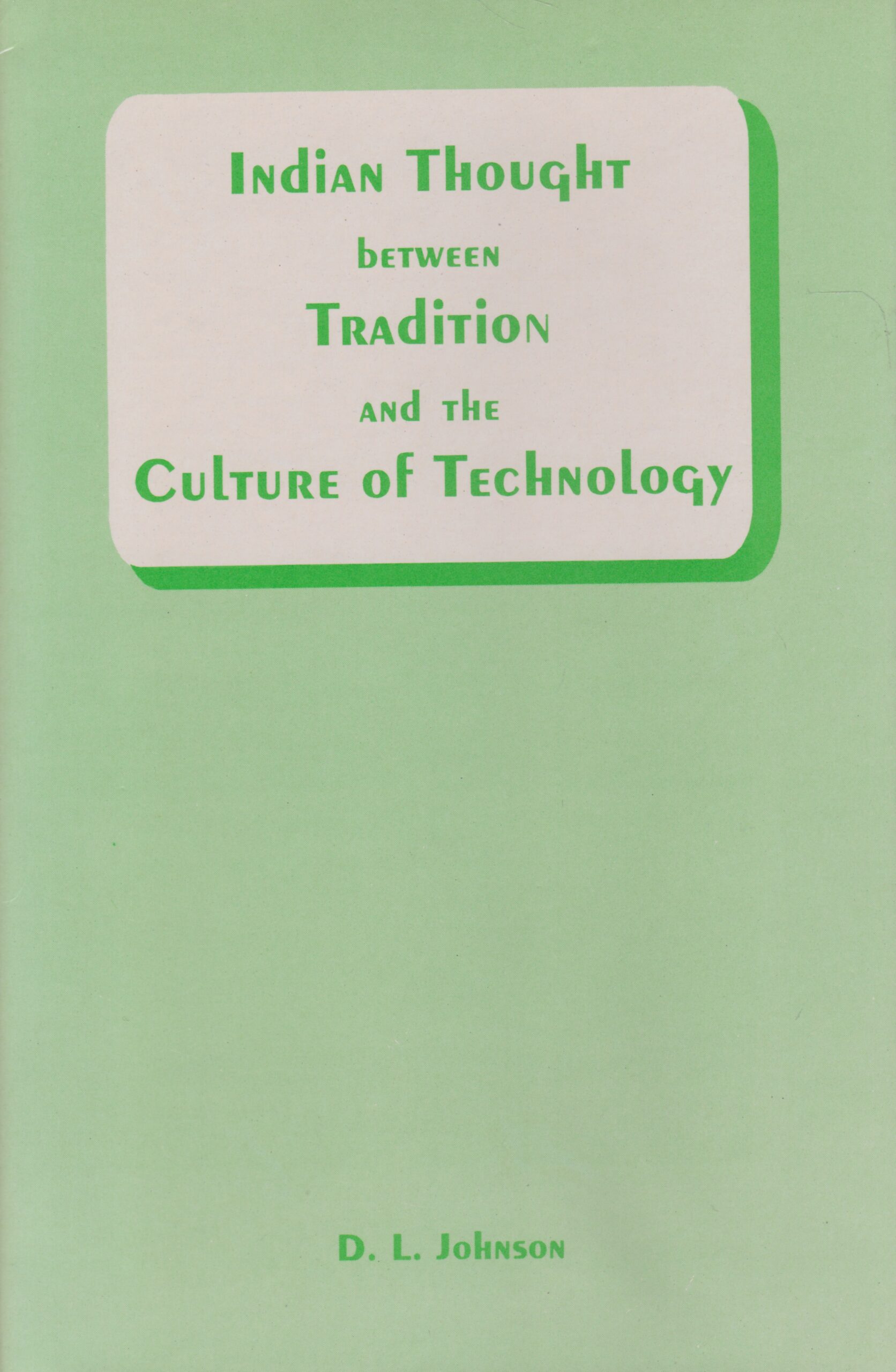
It is a socio-cultural study of the contemporary Indian society in the context of the invasion of the culture of technology. Analysing the reactions of Gandhi, Aurobindo, etc., it offers a futuristic assessment of the problem.
The book is a brilliant socio-cultural study of the contemporary Indian society in the context of the invasion of the culture of technology. The recent spate of technological advancements involves much more than the mere use of lifeless mechines. It is an inculcation of a constellation of values and ideas a new culture. In a tradition-bound society like India the culture of technology is looked at with panic and suspicion. The phenomenon of dehumanisation and the erosion of human values associated with this culture seems to confuse the Indian mind. Yet, India has not been able to withhold the march of this culture. Dr. Johnson makes a penetrating analysis of the Indian predicament with reference to the reactions of Gandhi, Sri Aurobindo and Jayaprakash Narayan; and offers a futuristic assessment of the problem. He argues that the solution lies not in dismissing the culture of technology but in incorporating it within the fabric of tradition, so that India can keep pace with the time. He tackles the problem by delving deep into the intracies of the matter of tradition and technology; and spells out the changes required in our traditional way of looking at things. The book is very contemporary in its approach and reflects a rare kind of optimism about Indias potentialities in facing the problem.

This volume is collection of eight lectures delivered by Dr Kapila Vatsyayan on different occasions, some in the memory of four eminent persons and another four on critical issues related to culture.
This volume is collection of eight lectures delivered by Dr Kapila Vatsyayan on different occasions, some in the memory of four eminent persons such as Ancharlott Eschmann, an art historian; Dr C.D. Deshmukh, founder of the India International Centre and former Chairman, University Grants Commission; Prof. Birendra Kumar Bhattacharyya, eminent writer social worker andformer president of the Sahitya Akademi and Dr D.S. Kothari, the doyen of science and a dedicated Gandhian, and the remaining four on a few critical issues related to culture.
These lectures delve upon crucial terms and topics like shastra and prayoga, and marga and desi in the study of Indian arts, other social systems and the sociology of religion; interface of culture and development; role of arts in social transformation; a modern rishi, the eco-cultural cartography of South Asia; the oral and written systems of knowledge transmission; the different aspects of Indias cultural heritage and identity; and Hinduism as a religion of divine immanence, where concepts like purusharthas and varnashrama-dharma are all part and parcel of the all-encompassing Sanatana Dharma.
This book thus enables readers to enlarge and nurture Indias cultural heritage and its allied features. In a fast-changing world, one should know his cultural past and thereby prepare himself to absorb what is needed, without losing his identity and existence.

The thought-provoking articles contained in this volume present insights into the Hindu religious vision for nourishing mutual appreciation and respect among the various religious traditions. They also make up a presentation of Vedic and Upaniùadic ideas of understanding and ahi§sà to address some of the most urgent global problems of today.
The conference papers make up a presentation of Vedic and Upanishadic ideas of understanding and ahimsa to address some of the most urgent global problems in todays world. The scholarly articles elaborate on principles of ahimsa as practised by the Buddhist and Jain traditions and by the Indian leader, Mahatma Gandhi. Scholars from India and other parts of Asia as well as the West here explore the scientific and systematic nature of life of the Vedic people. They examine aspects relating to linguistics, the Indian epic literature, and advaita, and study many individual topics like states of consciousness in Indian philosophy and concept of time in Indian heritage. They delve into the meaning and message of the Upaniùads as extremely relevant to us in the present century. A study examines festivals to determine the correlation between annual festivals and natural factors and conducts a scientific analysis that establishes a relation between lunar phases and human physiology, and more generally the relation between calendar and culture.
The thought-provoking papers present insights into the vision of Dharmic traditions for nourishing mutual appreciation and respect among religious traditions. They also reveal the abuses and distortions that the tradition has suffered from within over the ages. They call for a scientific analysis of human traditions so that their time-tested values can prove relevant to the present day.
The book investigates the bhakti beliefs and practices of the subaltern Kabirpanth community in comparison with the nirguna bhakti thought of their guru, the medieval iconoclastic bhakti saint Kabir. By doing so, the book attempts to investigate the Kabirpanthis’ attempt at dissent and submissiveness vis-a-vis the dominant Sanskritic Hindu tradition. This dual strategy of dissent and submissiveness is analysed through subaltern postcolonial lens as well as by employing social anthropological empirical research.
The book begins by making an analytical study of the medieval Bhakti movement and the nirguṇa bhakti teachings and practices of Kabir. Using postcolonial discursive tools such as postcolonial mimicry, ambivalence and hybridity, the author investigates how the bhakti beliefs and practices of the subaltern Kabirpanth community are elements of subversive and resistance stance against the dominant Sanskritic Hindu tradition.
This book is a must read for anyone interested in bhakti religion and movement and those who wish to analyse subaltern religion through postcolonial lens.
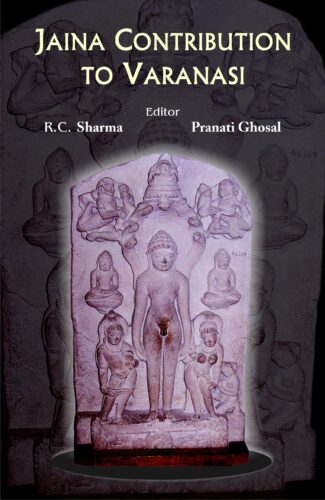
Varanasi/Kashi has been a confluence of several religious and philosophical thoughts including Jainism. Four pontiffs (Tirthankara) viz. Supasvanatha, Sreyamsanatha, Chandraprabha and Parsvanatha are supposed to have been born in the Varanasi region. The book highlights multiple aspects of cultural contribution of Jainism to Varanasi such as religion, philosophy, literature, art, iconography, architecture and educational institutions.
Varanasi/Kashi has been a confluence of several religious and philosophical thoughts including Jainism. Four pontiffs (Tirthankara) viz. Suparshvanatha, Shreyamsanatha, Chandraprabha and Parshvanatha are supposed to have been born in the Varanasi region. It was thus natural that the town grew into a pilgrim place for the followers of Jaina faith. The book highlights multiple aspects of cultural contribution of Jainism to Varanasi such as religion, philosophy, literature, art, iconography, architecture and educational institutions.

The entire Mahanadi River Valley is stated to be the land of Kamakala (art of desire), Uddiyana-Pitha (the sites where Lord Shiva resides in the Yogini cult) and erotic art. Based on a deep study of archaeological remains, this book reveals the contribution of the Valley to the origin of esoteric yogic sadhanas.
The entire Mahanadi River Valley is stated to be the land of Kamakala, Uddiyana-Pitha and erotic art. Kamakala means the art of desire; the divine Kamakala is symbolized in the shape of two circular components, the overall shape signifying the union of male and female principles. The Uddiyana-Pitha refers to sites where Lord Shiva resides in the Yogini cult that developed in this region.
The volume reveals the contributions of the Mahanadi River Valley to the origin of esoteric yogic sadhanas (spiritual practice). Based on a deep study of archaeological remains which include numerous antiquities like sculptures, the book examines the origin and development of the Yoginã cult in the Mahanadi River Valley, laying stress on the Yoginis representation of the cosmic creative forces. It delves into the evolution of the Bhairava cult, the Ganapatya Tantra in Orissa, role of Mattamayura Shaivism there, and the origin of the Purushottama Jagannatha cult. Exploring the aspects of sensuousness in art and its link to the tantric cults, it scrutinizes the development of erotic art in Orissa, examining erotic sculptures, erotic art in wood and palm-leaf manuscripts. Abundant in references to ancient texts and modern scholarly works on the subject and with numerous illustrations, this intensive work also explains numerous terms and differences between words and concepts in an attempt to present a thorough study of the subject.
It is a good reference for those who are interested in the history of Orissa and various cults of worship, and students and teachers of arts and history, and researchers on Orissan culture, which is wide and varied.
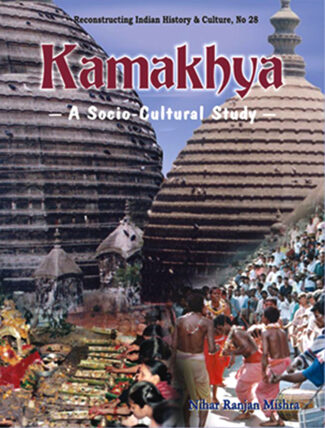
This is a comprehensive work on the Kamakhya temple complex in Assam: the complex processes of the deitys Sanskritization and the temples role in integrating the people of this region with the mainland. It makes a detailed study of the temple rituals, festivals and personnel and socio-cultural life and includes an account on spread of Saktism in the region.
This is a comprehensive work on the Kamakhya temple complex in Assam: the complex processes of the deity’s sanskritization and the temple’s role in integrating the people of this region with the mainland. Incorporating details from interviews with temple priests and other temple staff and from literary materials on the temple, it deals with the socio-cultural life at the temple complex with respect to rites of passage relating to marriage, birth and death, arts and crafts, food, dress and folk medicine. With illustrations of the temple structure and sculptures and religious and cultural activities, the text makes a detailed study of the temple rituals, festivals and personnel their kinds and functions and changes in the body of the temple staff with time. Importantly, it provides a background to the study by examining the spread of shaktism over different periods in the Eastern Indian region and specifically Assam.
| There are no products |